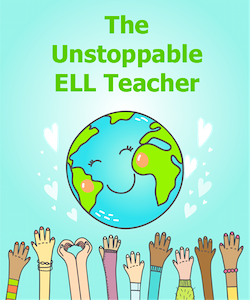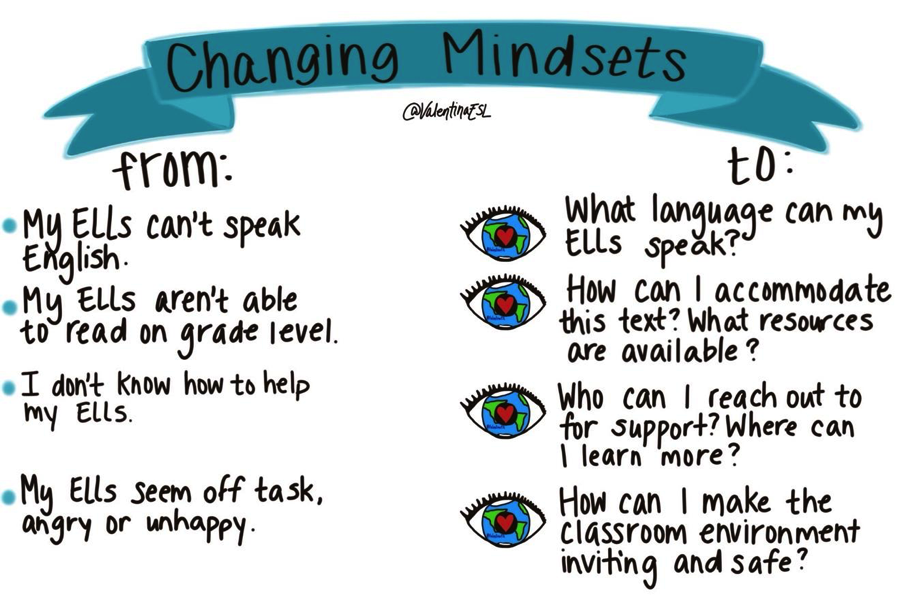Making Students’ Assets Our #1 Teaching Priority
A MiddleWeb Blog

The phrase “assets based” is thrown around quite a bit lately. But what does it truly mean to take on an assets-based teaching mentality? What does that look like in our classrooms and in our lesson plans? How does it sound? How does it impact the young people in our care?
Knowing our students
I mean REALLY knowing them — beyond the permanent record folder. Yes, we need to know their educational history, their grades, their attendance, and their test scores, but there’s so much more.
We need to know THEM. Who they are outside of the walls of our schoolhouse. What do they love? What makes them happy? Sad? What do they go home to? Who do they go home to? Where did they come from? What traditions do they value? What beliefs do they hold true?
One of the best ways to get to know our students is through conversations. My favorite conversations with kids happened during reading or writing conferences. Students typically never realized that I was filling two needs with one deed during our reading or writing conferences. But I was.
I would pull up a chair next to a student and simply have a casual conversation. My conversations were quick, intentional and powerful. I learned about each student both personally and academically. The conversations had an added bonus. They helped us build relationships. My students felt that I truly cared about them.
Valuing what our students bring
When we value what our students bring, we recognize their history and knowledge and use it as a foundation for their future learning. We take what we know about them and leverage it in our classrooms to propel their growth and progress in language and content. We help students understand that what they currently come to us with is helping them get smarter.
Valuing what our students bring can happen naturally, or we might have to work on it. It might need to be an intentional push on our behalf. For example, if we know our students speak another language, learning a few key words or phrases in their native language shows that we value their native language. This also shows the rest of the class that knowing another language is cool, that languages are good, and that diversity is a positive thing.

Our kids need to understand this strength and embrace it! So many of our students don’t realize this and rather try to shed their native language because of embarrassment. This harms them not only personally but academically.
There are many ways to implement native language supports. One is to provide students with bilingual dictionaries or Google translate. Another is to provide students with information and text in their native language. Encouraging and embracing native language support is an essential practice.
Tap into your students’ families. Many of our students come from culturally rich backgrounds that are different from our own. We can capitalize on this by opening our classroom doors and allowing parents to come in and share their expertise. If we invest time in getting to know our students’ families, we will know what types of specialties they have or experiences they can share. Reach out to parents and invite them to come and present to the classroom.
One year, I had a student whose parent was a doctor in her home country. When we began learning about the body systems, I invited the parent to come share with the class. At first, she was reluctant. She feared her accent would not be understood by the students. But I encouraged her and thankfully she came. She brought medical artifacts and books and shared with the class.
My students were so engaged and asked her many questions. For weeks after she left, the students referred back to her visit and what they learned. It was real and relevant. And I could not have taught it the way she did with the real-life experiences she had.
Empowering voices
Our students need to be heard, and they crave it. It’s our job and responsibility to amplify their voices in and out of our classrooms. We can give them the power by providing many opportunities to share output. It’s no longer important or valid for us to teach our students a bunch of facts. Facts are easily forgotten and easily Googled. We are here to teach them to think and learn.
When our classrooms are warm, safe environments for students, then they feel welcome to take risks. For many students it isn’t the fear of making a mistake that stops them from sharing, it’s the fear of being embarrassed in front of their peers. This is especially true for kids in the middle grades.
Building a community that empowers voices in the classroom can take on many forms. Building in less teacher talk and more student conversation in lessons supports student voice. One of my favorite ways to do this is through cooperative groups and structured conversations such as QSSSA and Socratic Circles.
In addition to having students share orally in class, we can empower students’ voice by creating opportunities for them to share beyond the classroom walls. Students can share via blogging and other online options. With the use of technology, our students can share their voice with the world.































Wow! What a powerful idea! I have always believed that when students see poor teaching in class, they are thinking; I don’t care how much you know until I know how much you care. Another way this is demonstrated is by the switched off behaviour of the student: saying in effect: if you don’t care enough to know, I don’t care enough for your subject either! Assets are truly the roots of connection to learning.
Well said, Abbas and thank you for reading.
I agree that an assets-based model provides the foundation for a powerful learning environment. I especially like the section on “empowering voices,” because elevating ELs voices in the classroom not only allows for ELs to strengthen conceptual understandings, it allows the possibility to build culturally rich communities of practice that build upon multiple perspectives and ideas.
Thank you for the feedback, Renae! Amplifying our students voices is powerful!
Very good!! Valentina.. It is quite important to really know and recognize What our students are and do.
Yes!! Truly knowing our kids is key to success!
Can you tell me what the difference between this and strength-based programming that is already in practice?
Hi Brook,
That’s a great question. The terms are somewhat synonymous from what I’ve read and in my experience. Both are about seeking and tapping into students’ talents, characteristics, knowledge, and intentionally developing those strengths. Recognizing, highlighting, and taking what they have and building upon that.
Thank you for reading and inquiring!
Do you have any asset based strategies that you can share? I am trying to incorporate student assets into my lessons, but am struggling with what this might look like in second grade.
Hi Megan, thanks for asking. I have taught primary (2nd grade too). The best way to incorporate assets in any grade level is to know your students. Knowing them will help you know their assets. What do your little scholars bring to the table? Each one has their tiny little story that is so big to them. Give them plenty of opportunities to share their ideas, thoughts, opinions (about content and about who they are).
QSSSA (mentioned in the article) is an excellent strategy to teach even 2nd graders for structured conversations. Assets based lessons and teaching are centered on the strengths of students – so giving them choice in reading, writing, and how they demonstrate what they know is a great start.
In order to reach a more asset based approach to my teaching, I have implanted a ‘get to know you’ project at the beginning of the year. Students are asked to create a Google slide show depicting their various rich cultural backgrounds, which focus on their families and countries. When the students present their projects, I gain much valuable information on their asset’s based backgrounds, which in turn gives me the opportunity to learn and appreciate what each individual student brings to the learning environment.